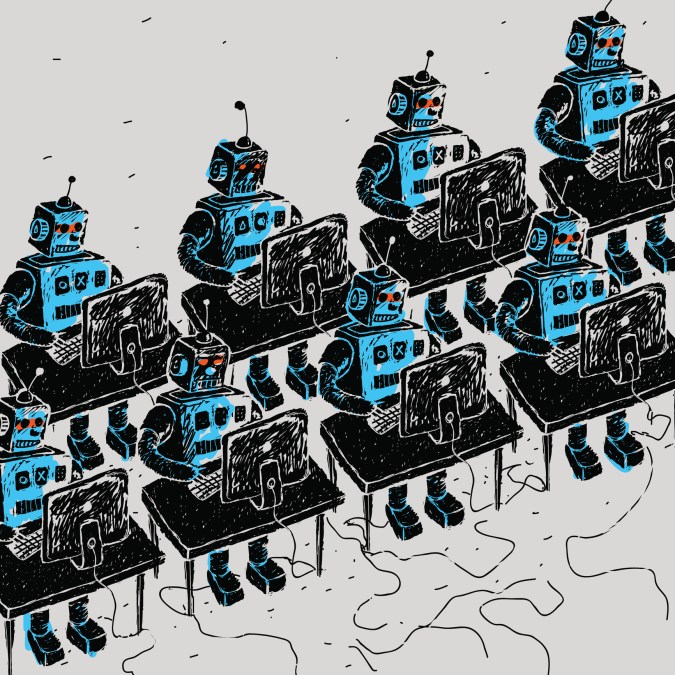States are warming up to new technologies during pandemic, CIOs say

The coronavirus pandemic has introduced many new challenges for states, but several state chief information officers said Monday they believe the widespread transition to remote work and other disruptions caused by the crisis present opportunities to advance technology’s role in state government.
State CIOs have reported challenges in procuring enough laptops for their remote workers, educating staff on the necessity of multi-factor authentication and watching for phishing attacks, and in keeping overburdened unemployment systems running. But Tennessee CIO Stephanie Dedmon said the move to remote work and increased demand for digital services from state agencies are chances to accelerate initiatives that had already been underway.
“Generally every day there’s some opportunity … to do something we’ve been potentially already talking about or trying to push with our agencies,” Dedmon said in the opening session of the National Association of State Chief Information Officers’ virtual midyear conference. “But now in an emergency situation they’re certainly more likely to be open to newer technology than they were before. And certainly not to make any light of the situation we’re in but that’s in the category of not letting a good crisis go to waste.”
Dedmon said Tennessee started a remote-work initiative about seven years ago that about 30 percent of the state government’s workforce was using at least part-time before COVID-19 arrived. Now, she said, about 54 percent of the state workforce is working from home. Though that forced her division to make an emergency procurement for 2,200 new laptops and that the need for a new tool arises nearly every day, she said, the pandemic also spawned fortuitous side effects, like an uptick in users on the state’s mobile app.
“I think with the demand, the volume and the unprecedented demand with unemployment insurance, our agencies have been willing to implement some additional technologies to increase digital connection with our citizens,” Dedmon said. “This is an area where I see we can continue to grow that and really use this with other agencies to better prepare and implement more digital services. So, we have a ways to go. I think this situation, the pandemic, will help us.”
Despite having telework initiative in Massachusetts the last six years, CIO Curtis Wood said some agency heads were still dubious that remote working would be tenable. But the enduring pandemic has begun to change their minds.
“I think the work we had done in the past year or so to be prepared for that from a network perspective, from infrastructure and desktop, I think we were pleasantly surprised,” Wood said. “I was actually very surprised at how successful we were in a very short order. Our business community I think was probably even more surprised.”
Massachusetts had already been expanding its use of Microsoft Office 365 and other cloud-based platform, which Wood said ended up paid off as the pandemic flared.
“We had made some progress on the past couple years of putting services in the cloud,” Wood said. “I think during our immediate three, four weeks, that was a godsend because some of these applications would have never run in our state data centers. We would have had some real challenges to scalability, especially for our unemployment system and other applications.”
To assist the Massachusetts Department of Unemployment Assistance, which has received more than 725,000 new jobless claims since mid-March, Wood said his office raced to deploy a cloud-based call center and new automation tools, like chatbots, to relieve the burden on human call-takers.
And to ensure that conversations about technology are focused on ensuring the continuity of government services rather than starting turf wars over who should own a given application, Wood said he’s “retooled” his conversations with agency leaders to focus on the concepts of “availability, accessibility, resiliency [and] scalability.” The cloud-based call center, he said, demonstrated that perhaps government doesn’t need to lease as much real estate as it does today when cloud-based technology and remote working environments are performing so well.
“I think we need to be bold in government,” Wood said. “I think we need to modernize our workforce. I think we need to modernize our ability to provide these services and this is the way to go. I look at it as a great opportunity to really really change the way we provide these technology services and services to our constituents.”
Washington state CIO Jim Weaver said he’s been challenged by the need to provide security patches to remote workers and ensure that agencies continue to use common platforms. But he admitted that remote working is going smoothly. Dedmon agreed the change might stick.
“I think we will continue to work from home well past this pandemic calming down,” she said. “Maybe even never will we have our workforce back in the office five days a week.”




